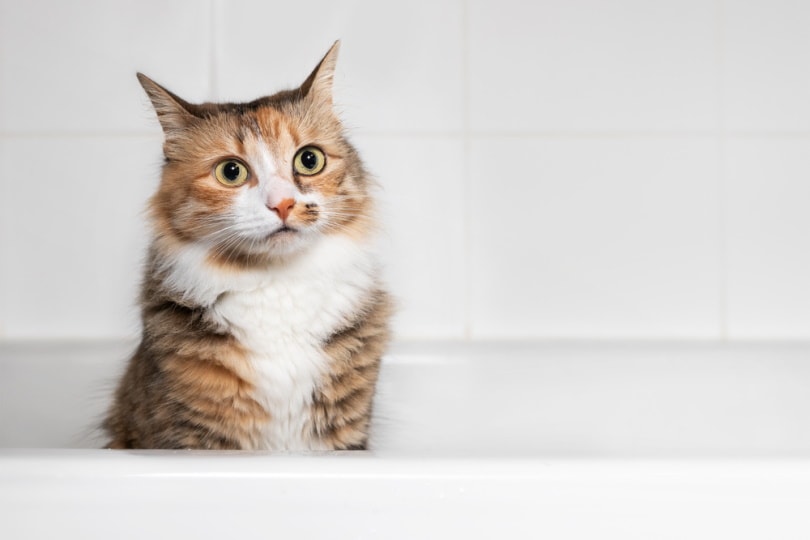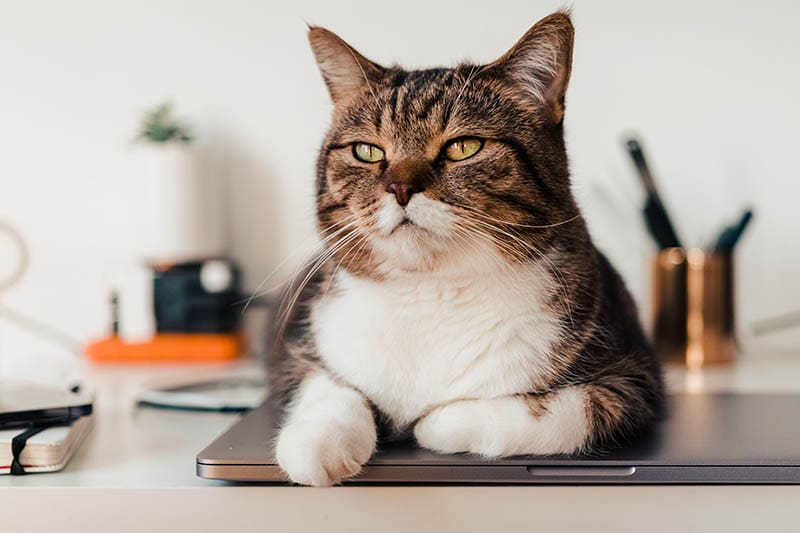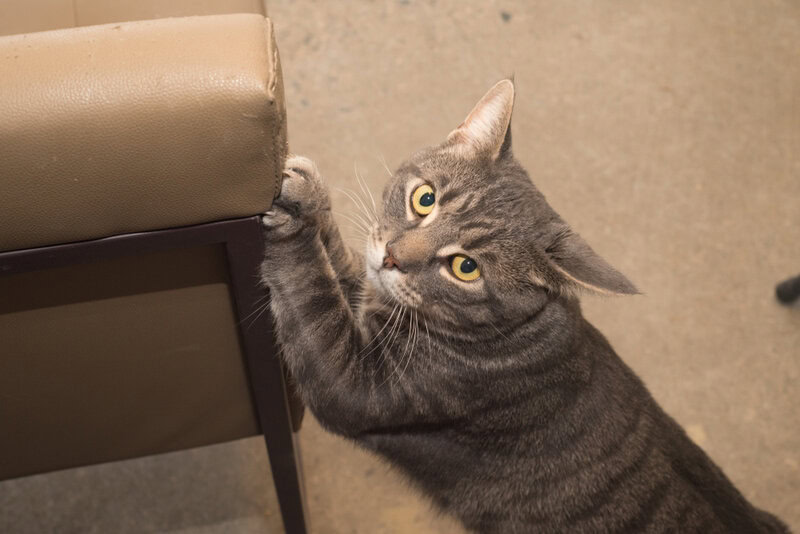VET APPROVED

The information is current and up-to-date in accordance with the latest veterinarian research.
Learn more »Sometimes, cats’ behavior is a huge mystery to us humans. One strange thing that many people catch their cats doing is peeing in the bathtub. Why would they even want to do that, though? Bathtubs are cold and don’t provide a way for your cat to cover their waste like they would in the litter box. So, what gives?
Read on to learn more about why your cat is peeing in the bathtub!

Something to Consider
If your cat has suddenly decided to start peeing in your bathtub, and this behavior is new, it’s essential to get your cat checked over by a veterinarian. The medical term for urinating outside the litter box is periuria. There are multiple reasons that cats do this behavior, but you should rule out a medical problem that could be life threatening before you start looking into more simple answers. This way, you can ensure that your cat isn’t waiting for urgent medical care. Cats typically pee in the bathtub for one (or more) of three reasons: a urinary medical condition, litter box-related issues, and behavioral problems.
The 8 Possible Reasons Your Cat Pees in the Bathtub
1. Urinary Tract Disease
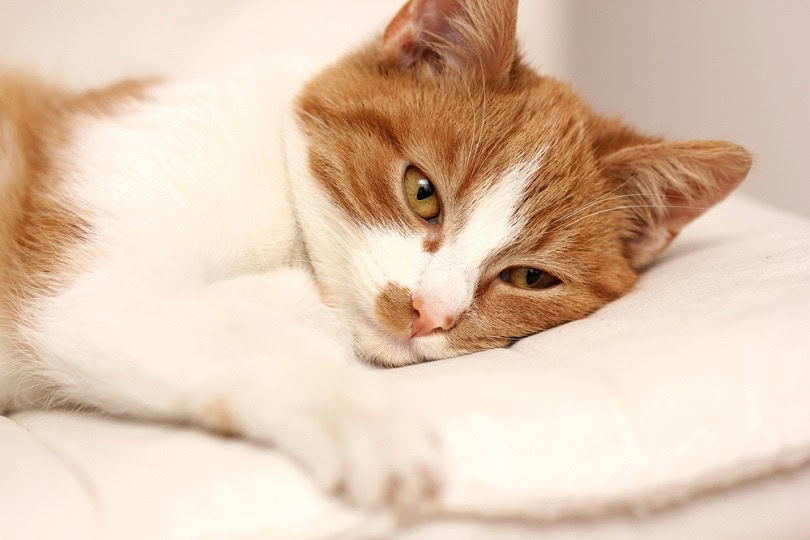
Some cats are more prone to urinary tract disease than others, but any cat can be susceptible to this issue. Lower urinary tract conditions include idiopathic cystitis, infections (mainly bacterial), urinary crystals and stones, obstructions, tumors, trauma, or anatomical problems. The term FLUTD, or feline lower urinary tract disease, is used to refer to any condition that affects the urethra or bladder. The signs of FLUTD include inappropriate urination (such as in the bathtub) due to discomfort, pain, or an overall sensation of needing to potty all the time. Cats may excessively lick their genitals, strain to urinate, vocalize, or pee more often. The urine may smell strong or have a bloody color.
With FLUTD, the sooner that the cat is taken to the vet, the better. These conditions are generally treatable with veterinary intervention, but some can be more difficult to treat than others. For example, some cats may require permanent diet changes to help maintain the health of their urinary tract, while others may need medication, hospitalization, environmental changes, or even a surgical intervention to solve the problem.
2. Chronic Kidney Disease
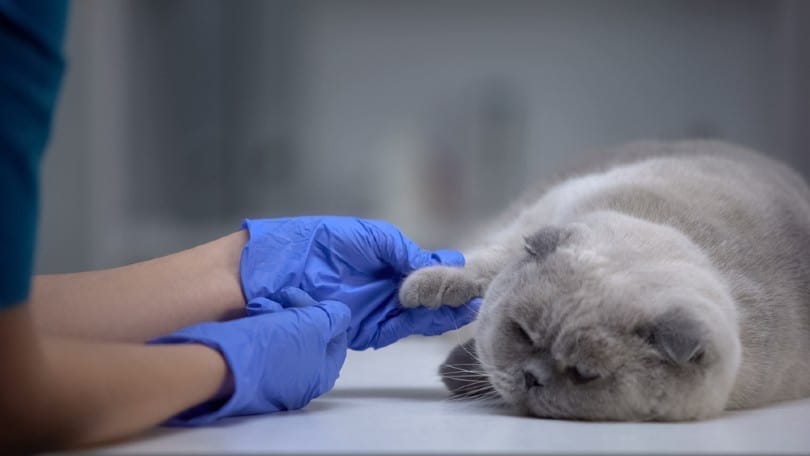
Chronic kidney disease (CKD) is unfortunately common in cats, especially in those over 10 years of age. It is a manageable disease, but like in people, kidney disease in felines has various severity levels as the kidneys’ function continues to worsen. Eventually, it can become deadly.
CKD always requires close collaboration with the veterinarian. Each stage of this disease has different treatment recommendations. Management options can help enhance longevity and maintain health, especially if the disease is caught early. If your cat suddenly starts peeing in the bathtub, they might also be drinking more, so it’s a good idea to rule out kidney disease as a cause. Other conditions that your vet may look into that can make your cat urinate and drink more are diabetes mellitus, hyperthyroidism, and pyometra (in intact females).
3. Dirty Litter Box
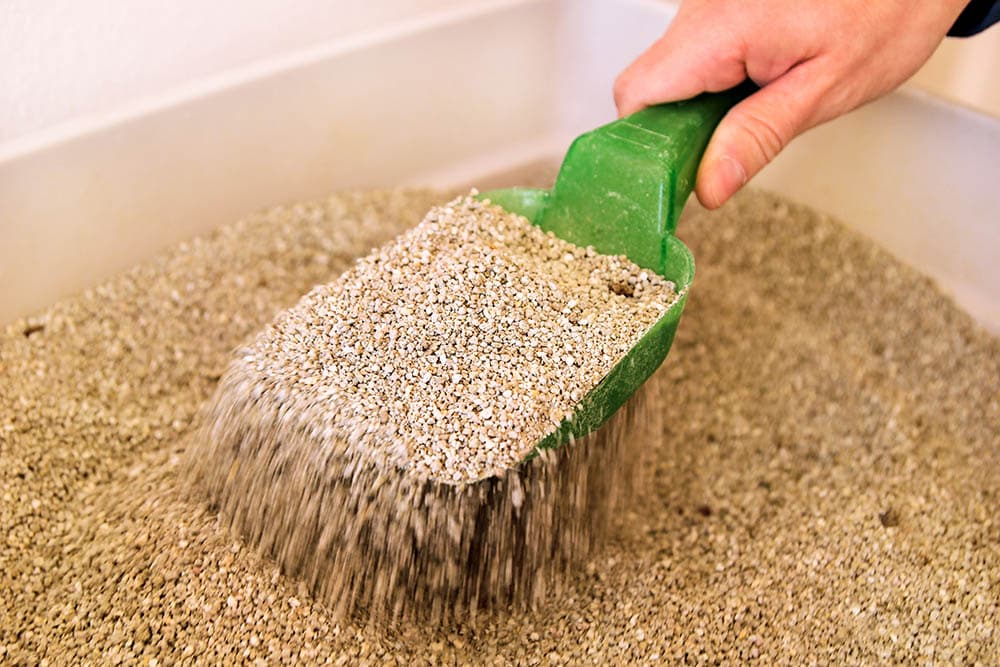
Some cats will absolutely refuse to use a dirty litter box, which leaves them seeking out other places to go potty. If your cat’s litter box isn’t up to their cleanliness preferences, it’s possible that your cat will start going in the bathtub or other inappropriate places in the home.
Make sure you perform daily litter box upkeep and routine cleanings. Your cat’s litter box should be emptied every day. It would help if you also disposed of the old litter and wiped down the box at least every 2 weeks, but weekly is better. Maintaining the cleanliness of the litter box will not only keep your cat happy, but it will also keep your home smelling fresh and decrease the bacteria being tracked from the box.
Even if you keep a clean and tidy litterbox, you probably still find yourself with cat odors and stains around the house – but with the Hepper Advanced Bio-Enzyme Pet Stain & Odor Eliminator Spray, you can permanently remove even the very worst pet stains and smells! Click here to learn more and get yourself a bottle.
- ADVANCED ENZYMATIC CLEANER - Penetrates the most stubborn smells and stains at the deepest molecular...
- FOR ANY MESS, ON ANY SURFACE - This pet odor eliminator cleans your carpets, floors, furniture,...
- FRESH, NATURAL ODOR - Our unique formulation doesn't rely on dangerous or unpleasant chemical...
At PangoVet, we’ve admired Hepper for many years, and decided to take a controlling ownership interest so that we could benefit from the outstanding products of this cool cat company!
4. Litter Box Location
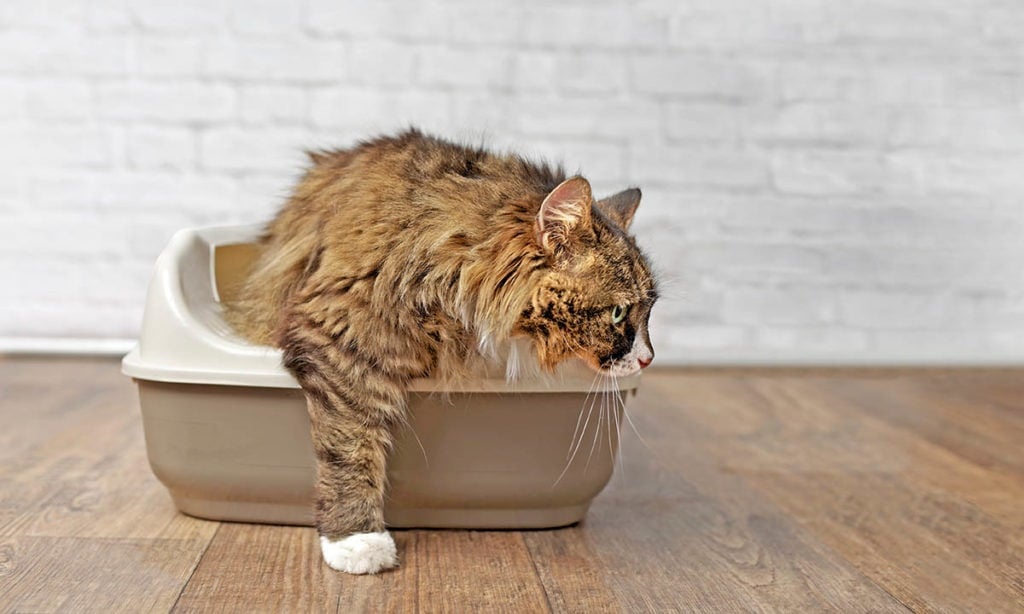
Cats are very picky about where they use the bathroom, so if their litter box isn’t located in a place that meets the proper requirements (in your kitty’s mind), they may refuse to use it and start going in the bathtub. If your cat’s litter box is located somewhere like the garage, they may not like dealing with uncomfortable temperatures in the area, or it may not feel like a safe place to go potty. If it’s in a laundry room, your cat may be upset by the loud sounds. If it’s too close to a window or door, there might not be enough privacy from outdoor threats. Litter boxes in busy parts of the home may have too much foot traffic for your cat’s preference.
5. Type of Cat Litter
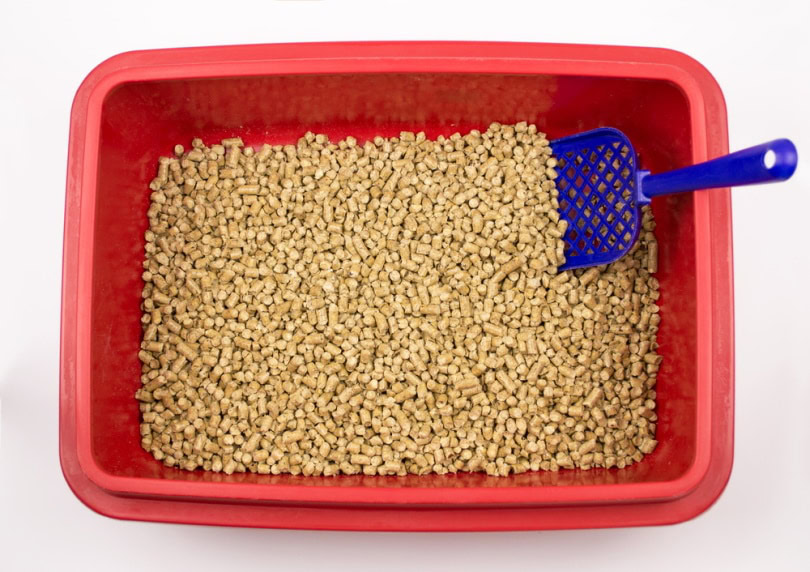
Some cats are extremely picky about the litter they potty in. Maybe you’ve recently switched to a different litter brand, or you’re trying a scented litter when your cat is used to unscented. Not all cats will take to all types of litter, unfortunately. This problem doesn’t always have a straightforward fix because it may take trial and error to determine what your cat does and doesn’t like.
You can always try out a variety of litters for them to choose from. Hopefully, your cat will let you know just how much or how little they enjoy a specific one. Remember to add the right amount of litter: Cats prefer to have an approximately 1.2–2-inch-deep (3-cm) layer of litter in their box.
6. Stressful Environment
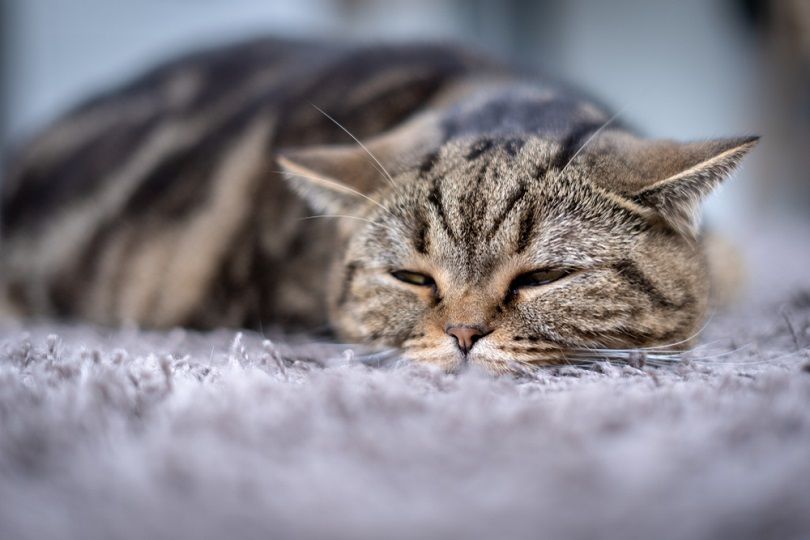
There are multiple things in the environment that could be stressing your cat and affecting their toileting, making them use the bathtub instead of their litter box. Cats are sensitive animals, so it requires a deep understanding of your pet and careful observation to identify the cause of their stress. It might be something that you hadn’t considered particularly stressful, like construction work or a change in routine.
Sometimes, medical conditions can cause stress that you can’t see, which warrants a vet visit. If there have been no notable changes in your home that you feel might be causing stress to your cat, it’s still a good idea to start off with a visit to the vet to rule out medical causes.
7. Not Enough Litter Boxes
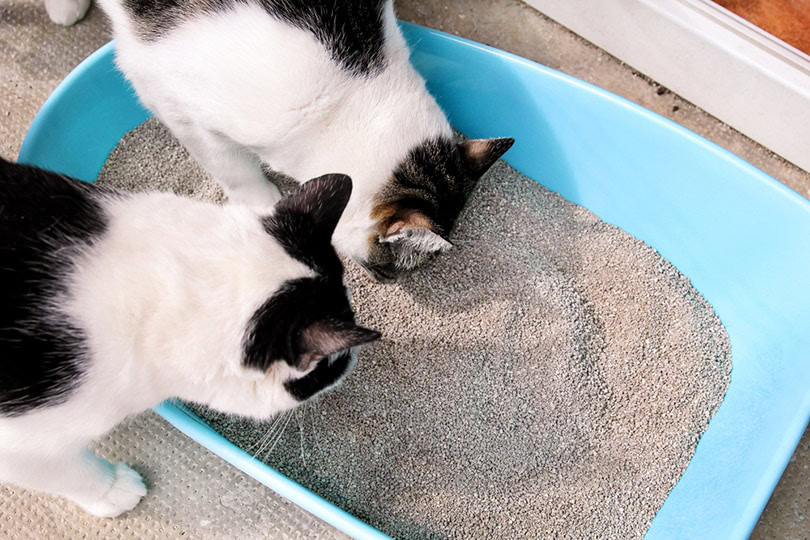
Once again, the litter boxes in your home may be the culprit. The general rule of thumb for litter boxes is that there should be one litter box per cat, plus one extra. If there aren’t enough litter boxes in your home, your cat may start peeing in the bathtub because they are not comfortable using the ones provided.
Also, make sure there is a litter box on each level of your home. Some cats may not be interested in transitioning between levels of the home every time they need to pee, which can lead to them going in inappropriate places, like the bathtub. Finding homes for multiple litter boxes can be frustrating, so get creative with it if you need to. Some people even add kitty doors to help their cat get to hidden litter boxes.
8. Behavioral Issues
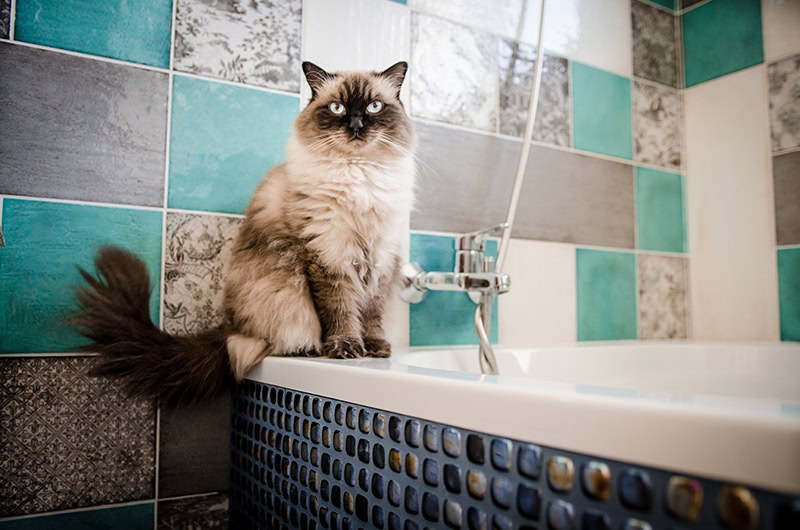
Sometimes, the cause for your cat peeing in the bathtub may be behavioral. Behavioral issues can be related to other factors, such as stress and medical conditions. Your vet or cat behaviorist can help you determine the reason for bathtub peeing. There are some training techniques and medications that can help with behavioral urination issues.
If you’ve ruled all other causes out and you’ve landed on the possibility that your cat is just acting out, it’s a good idea to talk to a vet about the available options.

Conclusion
If your cat has suddenly started peeing in the bathtub, it should raise alarm bells. While it may just seem like an annoying inconvenience, it could indicate a serious urinary issue. Multiple things can cause your cat to start doing this behavior, so take a look at all the options. The starting point to determining why your cat is doing this and remedying the behavior will vary for each situation because sometimes the answer is more obvious than others.
See also:
- Cat Peeing on Dog Bed
- How to Get Rid of Cat Urine Smells in a Basement
- Why Does My Cat Drink and Pee So Much?
Featured Image Credit: sophiecat, Shutterstock
